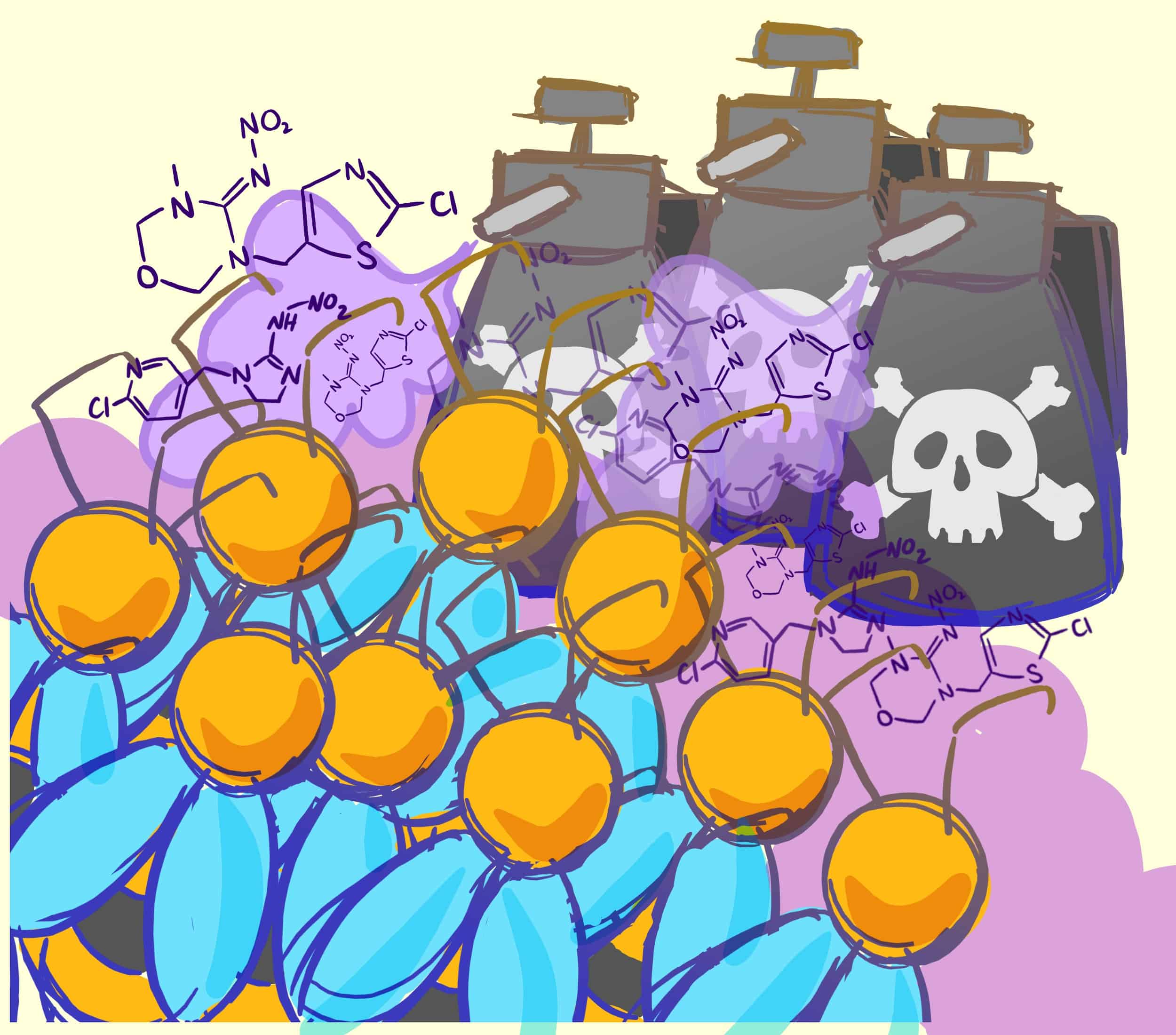On June 1, over 200 scientists signed an open letter calling for the restriction of neonicotinoid pesticides. The letter comes just over a month after the European Union (EU) banned the outdoor use of several neonicotinoids. Professor Dave Goulson of the University of Sussex, the lead signatory, directs the letter to policymakers around the world in hopes that it will motivate them to follow suit.
Years of evidence link neonicotinoids to colony collapse disorder (CCD), a phenomenon where the majority of worker bees in a colony disappear. Worker bees are exposed to this neurotoxin when they pollinate crops.
When reports of large-scale CCD events in bees began to crop up in the mid-2000s, the cause was unknown. Several studies that linked neonicotinoids to CCD were published in the years that followed, however, there was a lack of consensus in the scientific community over the significance of the threat. This was due to doubt and speculation as to whether laboratory studies could be extended to the real world.
In 2015, scientists from Sweden published two landmark papers that presented irrefutable evidence. By exposing bees to neonicotinoids in a controlled outdoor farm, the scientists demonstrated that neonicotinoids posed a threat to bees in a real-world scenario, and not just a laboratory one.
Neonicotinoids are the largest used class of pesticide in the world and are used to combat pests like aphids and grubs. As such, alternative pest control methods are needed following a ban. Ontario, which is the only region outside the EU to regulate the pesticide, is attempting to take a non-chemical approach to neonicotinoid alternatives. If Ontario farmers wish to purchase neonicotinoid-treated seeds, they will need to first, demonstrate a true pest problem, and second, take a course in integrated pest management (IPM).
IPM advocates the use of chemical-free alternatives over pesticides and has been proven effective for several crops and forest systems. However, Ontario farmers are only required to implement IPM if they wish to use a regulated pesticide. All unregulated pesticides are still fair game.
As such, we must be wary of ‘regrettable substitutions.’ This term describes instances where the substitute for a toxic substance is just as, or even more, toxic than the substance being replaced. Unfortunately, regrettable substitutions are not uncommon and run the chemistry gamut from flame retardants in children’s pajamas to the protective fluorinated coating in your raincoat. Most industrial chemicals have very little toxicity information available, and companies tend to act hastily when replacing banned materials. For example, although BPS was introduced as an alternative to BPA, a toxic additive in plastic products, studies later revealed that BPS was no less toxic than BPA itself.
History shows that banning just a single chemical does not necessarily solve the problem. If Ontario — and the rest of the world — wants to curb CCD in bees, they need to invest in green chemistry research. Green chemistry, which is a set of principles that aim to reduce or eliminate hazardous substances when designing, manufacturing, or applying chemical products, is an appropriate next-step in the neonicotinoid ban. Whether it involves the development of a new, safer pesticide, or research into the toxicity of existing compounds, green chemistry could prevent a regrettable substitution.
While IPM is an effective approach that should continue to be implemented, it does not stop the pesticide industry from developing new chemicals. If we do not fight chemistry with chemistry, we run the risk of playing chemical whack-a-mole. It would be foolish to ignore the lessons learned from similar scenarios: to let the story of neonicotinoids become one of regrettable substitution is inexcusable.


